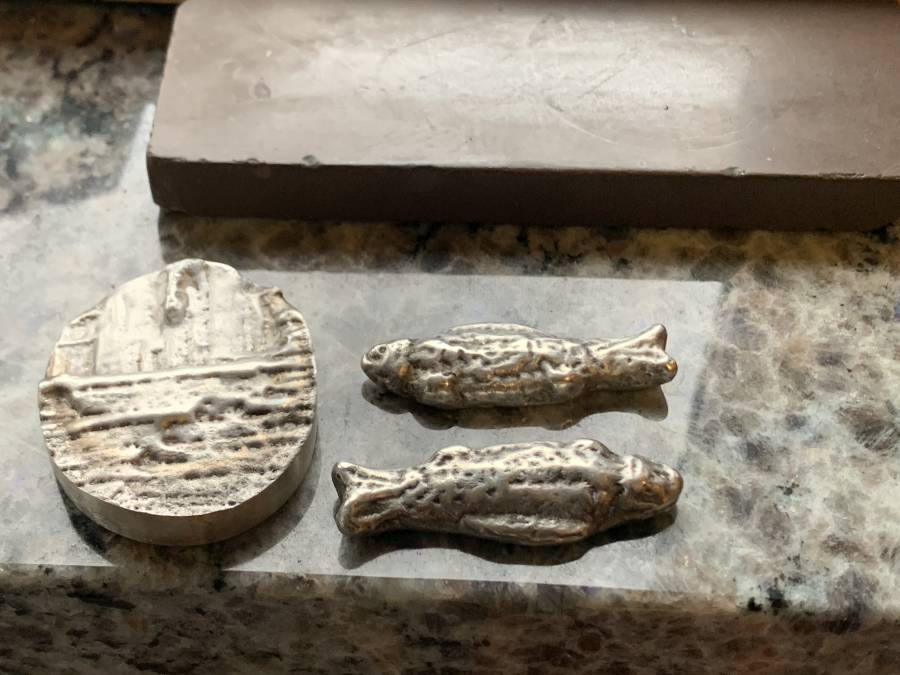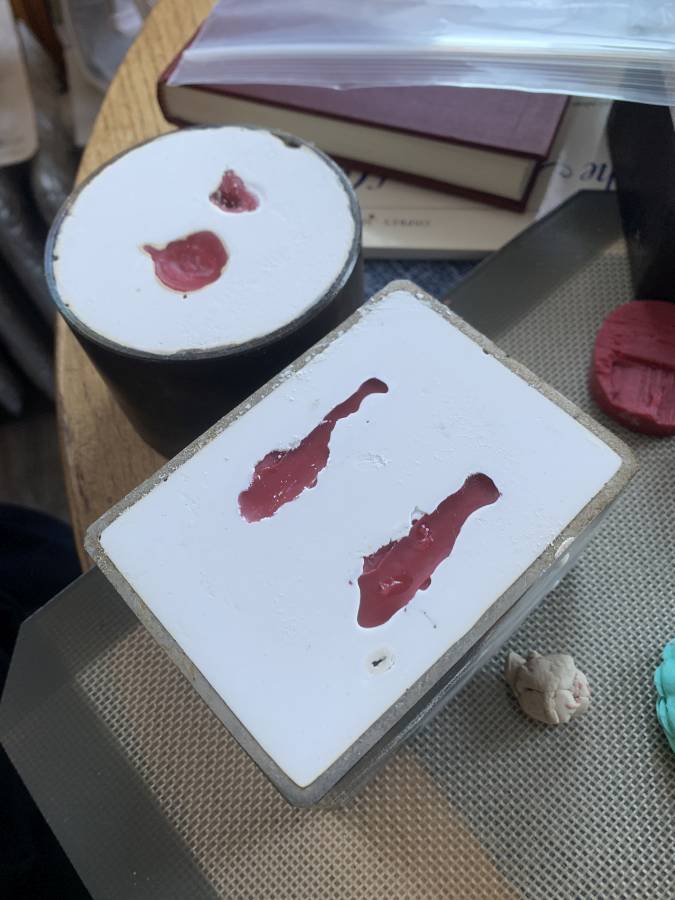If you’re looking to get into crafting, and want something relatively safe, inexpensive, low-gear requirement, with beautiful results, I recommend silver casting.
There is also a lot of “headspace” in the skill – you can be a dilettante for your whole life, and only get serious about the art-form many years later. If you want to get into it in a big way, the starting investment is on the order of a few thousand dollars. Or, if you are into building your own gear, you need a mapp gas torch, a crucible, a firebrick, some plaster and a piece of steel tubing and some beeswax – total cost around $50. Or you can sand-cast for just the cost of a torch.
I remember when I was a kid, in some museum (I forget the museum but not the content) an item was labeled as “lost wax process”- I asked my dad how it’s possible to lose a process, and he explained that it’s the wax that’s lost not the process. That was stretching my dad’s knowledge because he’s never been interested in technology.

swedish fish and plywood sample
To make the swedish fish, I simply used a dab of “shoe goo” to anchor a piece of candy to the counter-top. When the glue cured, I was going to put a frame around it and pour investment plaster. But, when I came downstairs, a mouse had pried the piece of candy up and run off with it, leaving a few mocking poops behind. Fortunately, there are many swedish fish in a bag, so I pretty quickly had another one ready to go.

I admit I have a lot of tool synergies. To make the casting frames, I just cut pieces of steel tubing on the bandsaw then machined the bottoms flaw on the milling machine. They’re so flat that I can put them on the countertop, pour plaster, and absolutely nothing leaks out the bottom. I use tube steel rather than wood because a) I have it b) it absolutely will not pop under steam pressure c) you can hammer on it to release the plaster d) burning out the wax is extremely easy.
The wax, embedded in the plaster, is placed face-down on some paper shop towels, in the oven, for an hour at 250F. That melts the wax until it gets absorbed into the towel. It does not smell great. Many years ago I put a drop of cinammon oil in my wax stock so it’d smell great.
![]()
I made the silicone mold by sticking a swedish fish to the counter top, putting a mold box around it, and flowing the silicone. One of the neat things about this process is you can decide if you want to make more than one wax, in which case you make a silicone mold and you can bang out an infinity of waxes. Once you’ve done that, you can modify the wax, or “remix” it by altering it and then making another silicone, etc.
My former publisher’s acquisitions editor also did silver work and her “thing” was assembling castings into larger artworks. For example, she would take cardboard and lace it together into something, then make a mold and casting from that, then decorate it by modifying it with pearls and insets and gold or platinum wire. Neat stuff.
This is really relaxing, especially since I obtained an electric smelter that simplifies the melting process. It was quite cheap ($150) compared to a blacksmith’s forge, and it’s easy and efficient. Easy and efficient equals safe when you’re working with hot metal.

I am disappoint. These are silver fish, not silver silverfish.
yeah, make a silverfish, you sunuvabitch.
I think bug legs are too delicate to cast or lift a mold from.
Yeah, the small details would be hard to cast. An idea would be to get a dead one, remove the various appendages, cast the body in silver and then add the appendages back on using fine wire. Maybe brass for contrast?
Free idea for anyone who wants to try, i don’t have the energy.
see? beans knows what’s up. fine wires. do it to it, son.
Marcus can always add it to the project idea stash
We used to cast flies by putting one on a pin and letting it dry. Then you dip it in a wax pot a few times, sprue it up, and invest it.
Centrifugal casting machines are cheap. It’s fairly easy to set it up inside a weighted 50 gallon metal barrel. Then you need a torch to melt your precious metals, and et voila!
A silverfly.
The legs were easier to cast completely than the wings, but it would be quicker to solder those thin bits on than try to cast them in one piece.
Fly casting: not merely a fishing technique
Dental labs have boil out tanks for melting the wax out of your mold/flask. It’s how dentures are made.
An old pot would work fine, and smell better than using the oven to burn it out. Just be sure to dry the mold completely before attempting to cast it with molten metal. Otherwise they tend to crack or explode, which is quite exciting but not desirable.
I’m quite curious about the plywood sample. For some reason I am not at all surprised by a silver Swedish Fish, but the plywood is kind of a huge amount of silver.
Wax itself is an entire field, most of which I’ve forgotten. Rope wax, bead wax, sheet wax, sticky wax, etc…. I learned to wax up using a Bunsen burner, a wax spatula, and a block of blue wax. Now we have electric wax pots and heated spatulas. You can also get jewelers wax blanks that are very hard green carvable wax.
The possibilities for creativity are endless.
Tethys@#9:
the plywood is kind of a huge amount of silver.
Yeah. I love the tactile feel of something heavy and very smooth. I was thinking it would make a good key fob.
Jewelers’ wax is amazing stuff. I weld it with an old battery-powered soldering iron, which works just fine. It’s laughably easy to work with, but then, I’m comparing it to hardened damasteel.
Ah. I thought this was going to be about silverfish as well, and was curious how you could tell they were Swedish. The ones I’ve seen don’t have any sort of accent. Now I get it.